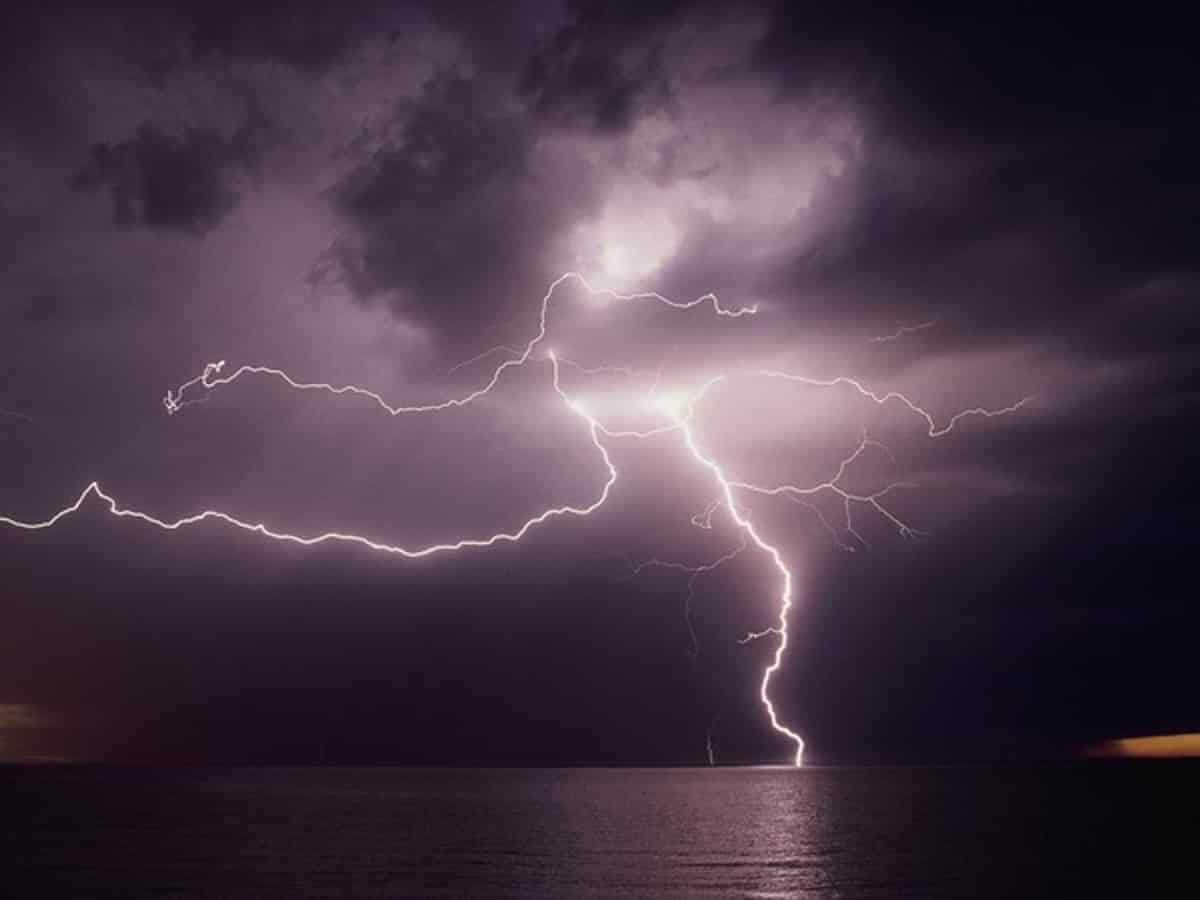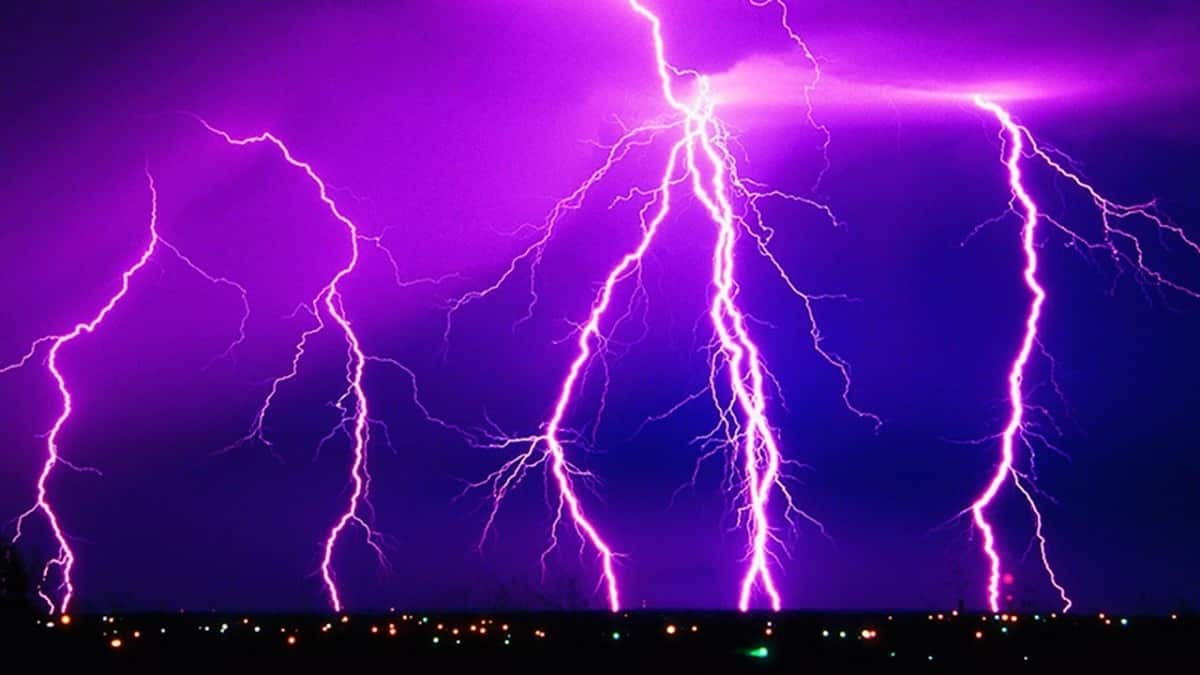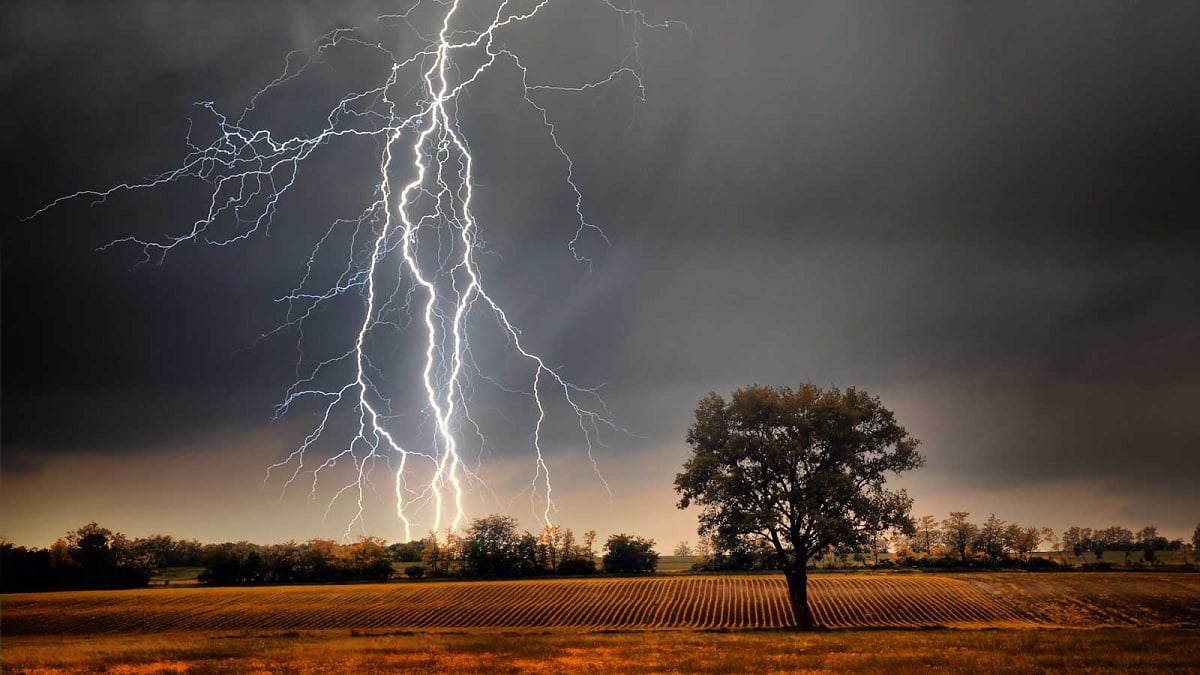
Many lightning strikes are produced in the world every minute. Lightning, lightning and thunder occur during thunderstorms. However, many people have doubts about these concepts. Some do not know well what is lightning or how it is formed.
For this reason, we are going to dedicate this article to telling you what lightning is, what its characteristics, origin and curiosities are.
what is lightning

It is the glow produced by electrical discharges in the atmosphere. It is important not to confuse it with lightning, which is itself a discharge. Therefore, lightning is the emission of light that accompanies lightning. Thunder, also often heard in thunderstorms, is produced by waves created by lightning as its wake heats the air. Lightning never reaches the Earth's surface, which is what lightning can do.
Another term related to lightning is thunder. Once there is lightning in the sky, a loud noise is heard due to the expansion of the air passing the discharge, this noise is called thunder.
It should be noted that lightning and thunder occur almost simultaneously, although lightning strikes first because light travels faster than sound. It is said that the distance from a person to a storm can be calculated simply by dividing the time (in seconds) between lightning and thunder by the speed of sound, which is almost 330 meters per second. To do this, we have to count the number of seconds that have passed since we saw the lightning and perform that division.
Formation and origin

Rain falls on the land, causing natural evaporation by convection. In this way, as the rain falls, the water droplets rise up into the clouds. At an altitude of about 2,5 kilometers, ice particles are also produced due to the drop in temperature, and the ice particles will fall due to gravity. The collision between falling ice and evaporating water droplets creates an electric field: when electric charges are transferred, lightning is created.
Due to the vividness and speed with which lightning occurs, the term is also used symbolically to name various problems or things that happen quickly or suddenly.
The lightning in society and culture

Lightning and bolts are noted for being spectacular to humans, as evidenced by the many mentions of them throughout history in myths ranging from the Olympian gods to modern literature.
On the other hand, many people enjoy watching lightning strike during the fiercest storms because it reminds them that nature has an indomitable force. Furthermore, while scientists are viewing a phenomenon, those outside the scientific community experience an almost magical energy spectacle.
It is worth mentioning that lightning, lightning and thunder can also be a source of fear for some people, especially children and at night, since the violence of this phenomenon activates their imagination and prevents them from focusing on the tranquility of the environment as usual. . When darkness is interrupted without warning by powerful lightning, produces long shadows in fractions of a second, which can be interpreted by the most sensitive as strange beings. If it is combined with a noise that can make the earth shake, many little ones are scared of it.
Differences with lightning and thunder
The main differences are these:
- Lightning is an electrical discharge that forms between clouds or from clouds to the ground.
- Lightning is the origin of lightning and thunder.
- Lightning is the flash of light that occurs when lightning discharges. It is a giant spark that illuminates the area of current flow during discharge.
Let's see in more detail what lightning is and its characteristics:
- The lightning is related to the discharge itself. This discharge occurs when the charge between two clouds or between a cloud and the ground is different.
- The difference is caused by friction between ice particles within the storm cloud colliding with each other.. These collisions cause the charges to separate, so the positive charge remains in the cloud, while the electrons are below it, forming on the ground. Earth load tends to accumulate and concentrate on the ground around prominent objects or structures, such as trees, mountains, or even living things. When the concentration is sufficient, the positive and negative charges connect and a lightning-like discharge occurs.
- Lightning travels at about 440 km/s, and although they are known to reach a maximum of 1400 km/s and have an average length of about 1500 meters, some larger rays have also been recorded. The longest on record occurred in Texas in October 2001, covering a total length of 190 miles.
- Lightning discharges have enormous energy, capable of producing up to a billion watts, rivaling nuclear explosions.
- The large amount of energy released creates a flash of light known as lightning.
- Thunder also occurs when lightning they raise the temperature of the surrounding air above 28 °C. This warm air expands and expands due to the increase in temperature, but abruptly contracts again when it comes into contact with the surrounding cold air mass. The shock wave from this effect produces what we call thunder, at extremely high volume and deafening over short distances. Thunder travels at the speed of sound at 340 m/s, well below the speed of light. So, the distance between thunderstorms can be estimated by the time difference between when we see lightning and when we hear thunder.
As you can see, there are some main differences between lightning and thunder that are essential to learn what lightning is. I hope that with this information you have been able to clarify all the doubts about it.
This article is interesting, I always wanted to know these natural phenomena in a well-explained way. Greetings